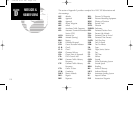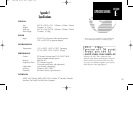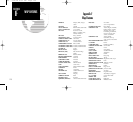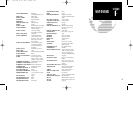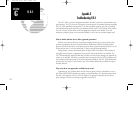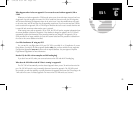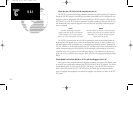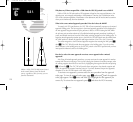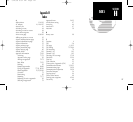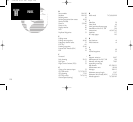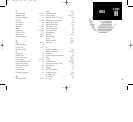
Appendix G
Troubleshooting Q & A
The GNC 300 is a precision navigation instrument that offers a wide array of performance navi-
gation features. The ‘Q & A’ section is designed to answer some of the common questions regarding
the GNC 300’s capabilities and operation. If you have a problem operating your unit, go through
the troubleshooting section and refer to the reference section noted. If your problem is not listed in
the Q & A section, use the index to find the appropriate reference in the manual. If you still
encounter a problem, please see your authorized dealer or call or fax our customer support staff.
What is RAIM, and how does it affect approach operations?
RAIM is an acronym for Receiver Autonomous Integrity Monitoring, a receiver function that
performs a consistency check on all tracked satellites. RAIM ensures that the available satellite
geometry will allow the receiver to calculate a position within a specified protection limit (2 nm for
oceanic and en route, 1 nm for terminal and 0.3 nm for non-precision approaches).
During oceanic, enroute and terminal phases of flight, RAIM will be nearly 100%. Because of
the tighter protection limit on approaches, there may be times when RAIM is not available. The
GNC 300 automatically monitors RAIM and will warn you with an alert message (see Appendix D)
when it is not available. If RAIM is not available when crossing the FAF, the ACTV annunciator will
not illuminate and the pilot must fly the missed approach procedure. The GNC 300’s RAIM predic-
tion function (see Section 1) will also allow you to see whether RAIM will be available for a speci-
fied date and time.
Why aren’t there any approaches available for my route?
Approaches are only available when the final route waypoint or direct-to destination is an air-
port (some VOR/VORTAC identifiers are similar to airport identifiers). If a destination airport does
not have a GPS approach, the GNC 300 will display a ‘no approach in database for arrival way-
point’ message. For more on selecting an approach, see Section 6.
122
GETTING STARTED
Status & Position
SECTION
G
Q&A
300 7/14/98 8:51 AM Page 122





